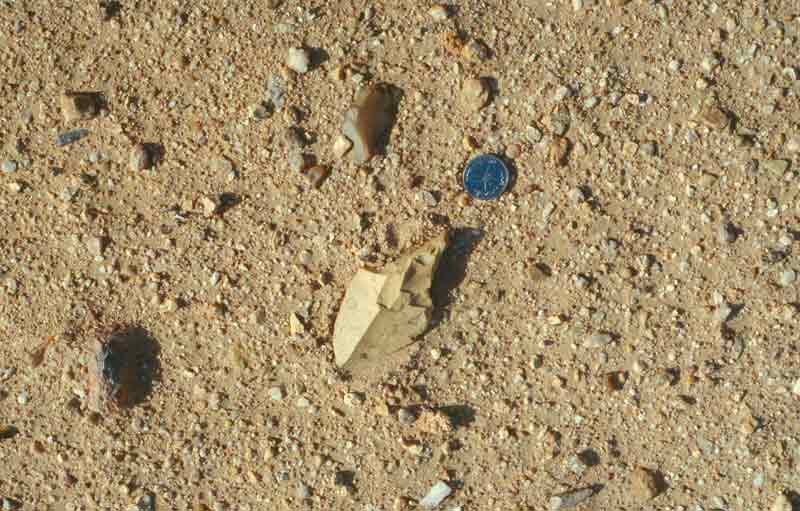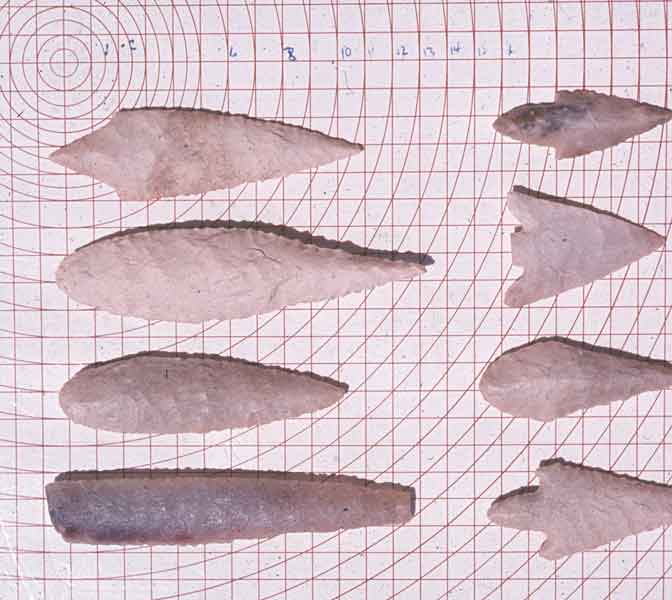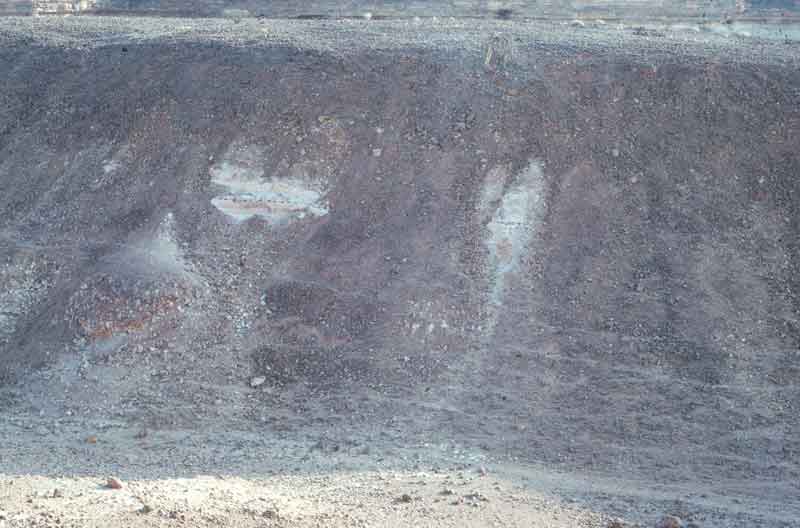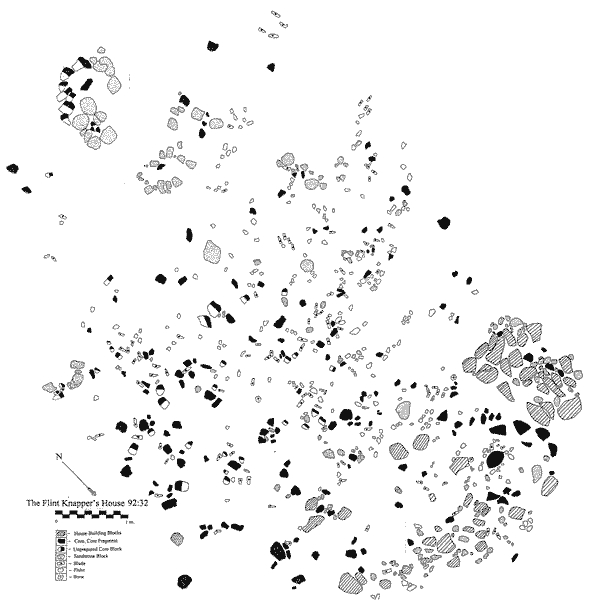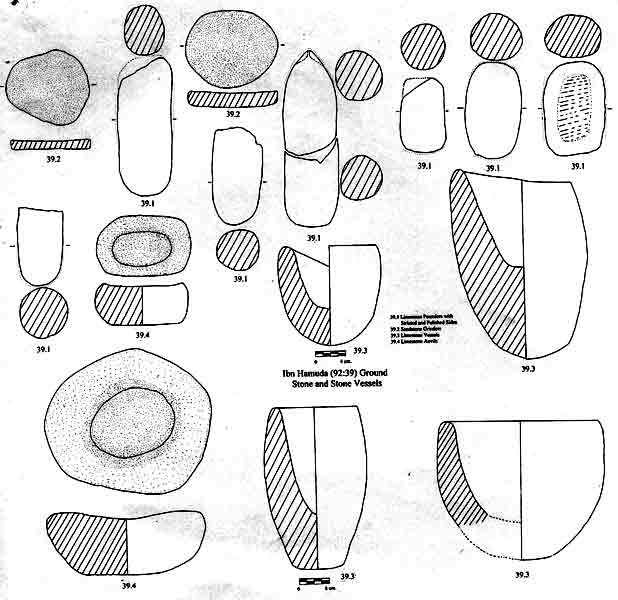The Archaeology Fund
Neolithic of South Arabia
|
Southern Arabia has archaeological links to the Horn of Africa/East Africa stretching back to the Lower Paleolithic - about 1.5 my BP. Modern humans may have entered the region as early as 75,000-50,000 years ago. Traditionally, the Paleolithic is considered to end by 10,000 years ago or the end of the Ice Age although detailed work on this transitional period to the early Holocene has yet to be worked out. The term Neolithic, used here as a typological and
technical term, is defined by the presence of people utilizing the latest stage of stone tools
before the advent of the Copper Age. In South Arabia, we have followed previous research in the
peninsula and created three sub-periods:
Settlements of this long period occur either along then active streams flowing into the Rub al Khali region, permanent or seasonal lakes, and attractive spring areas. Most sites are either ephemeral (probably seasonal) consisting of lithic scatters dominated by fire cracked rocks and hearths, or more substantial where circular houses created strong foundations [BA-014, BA-108-109]. Most villages have less than 10-15 houses, and populations in any given site probably never numbered more than 100. [Ayun, Matafah, Wadi Masilah]. Sites involving specialized activities such as quarrying [BA-072, BA-028], flint-knapping [BA-023, BA-021] and burials have also been found. During this time period, the agricultural revolution involving tyhe domstication of plants and animals must have strongly affected the region. To date, however, our ideas for this change are l;argely inferential. For example, domesticated animals such as goats, sheep and cattle, are reported both from the west in Yemen and north in Oman. Various domesticated plants such cereal grains from the Fertile Crescent and sorghums and millets from the Horn of Africa may also have been gradually introduced here (in addition to domestic cotton and indigo). Sites such as Ibn Hamuda with a wealth of pounders, grinders, and mortars/pestles could echo such a change [BA-076]. South Arabian Neolithic populations exploited a wide variety of ecological zones thanks to a very strong Southwest Monsoon [BA-071, IT-022]. This included the vast sand seas now called the Empty Quarter - The Rub al Khali [IC-067]. Most likely on a seasonal basis, populations spread throughout the Empty Quarter in the Summer exploiting animals and plants associated with the lakes and streams. In the winter they retreated to streams, lakes, and springs south and west of the sand desert. [IC-070 The people of the period, thus, did not see the Rub al Khali as a hindrance to crossing from South to central Arabia. What evidence do we have that such groups practiced long distance trade and more specifically began the incense trade? Our evidence comes from source trade first in marine sea shells. Various species most likely used for beads and other purposes collected from the Indian Ocean (and Red Sea?) have been far inland [BA-56] and deep into the Rub al Khali. Obsidian, a highly desired product used for cutting and scraping, occurs naturally only in association with certain volcanoes. Obsidian material found in the Rub al Khali and stream sites such as the Matafah [BA-081], most likely came from such restricted locales as Dhamar-Reda in southwestern Yemen [BA-078]. Finally, amazonite and steatite used for axes [BA-057], beads, and bowls also have a wide distribution. Therefore, Neolithic peoples of South Arabia, acquainted with incense products in their homeland, could have traded such remarkable products to Egypt (perhaps as early as Nagada II, ca. 3500 B.C., together with obsidian) and Mesopotamia (via Dilmun trade in the Ubaid or Uruk Periods) [IC-010]. |
|
